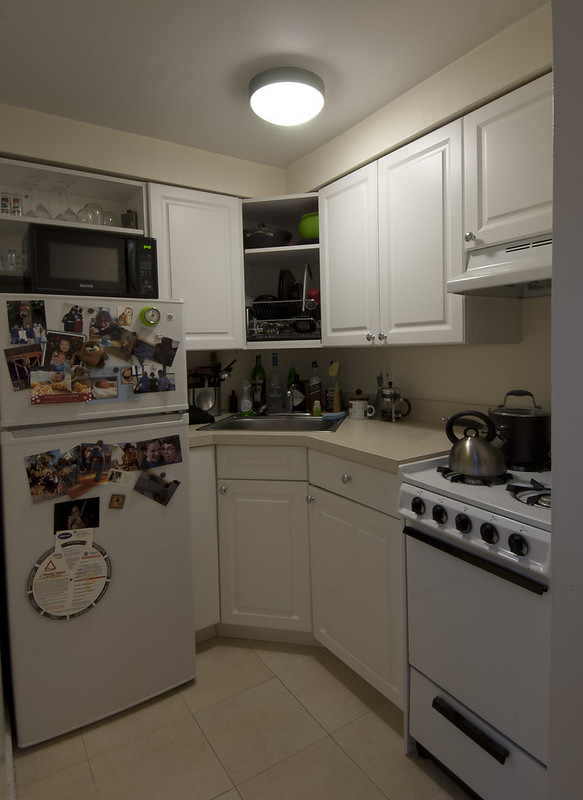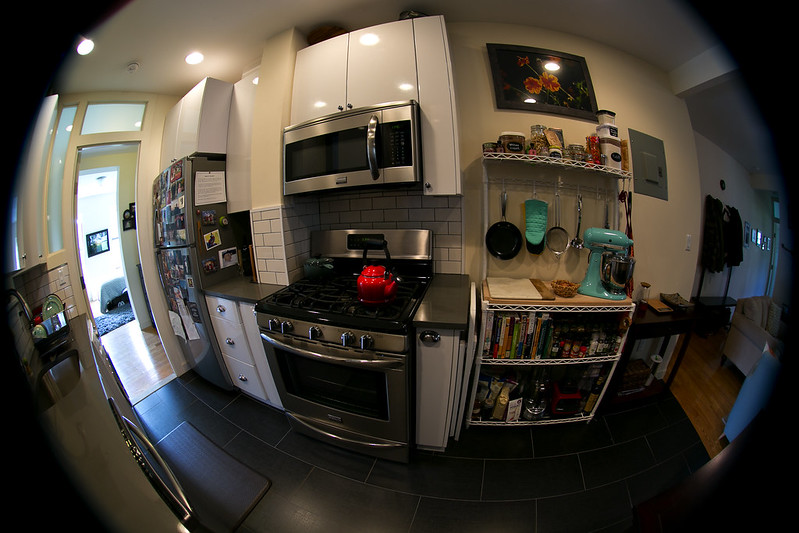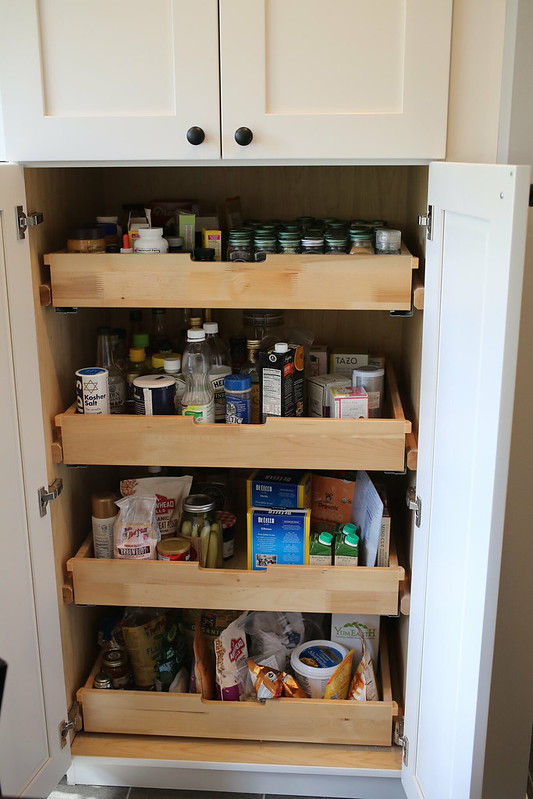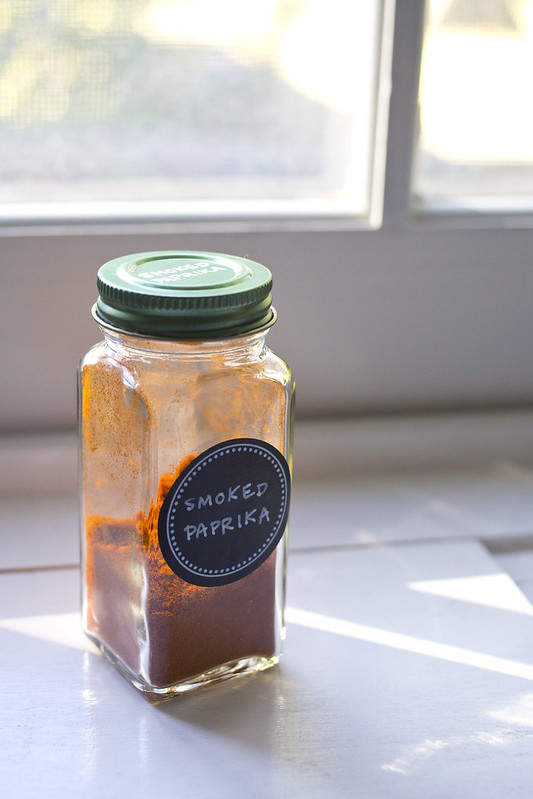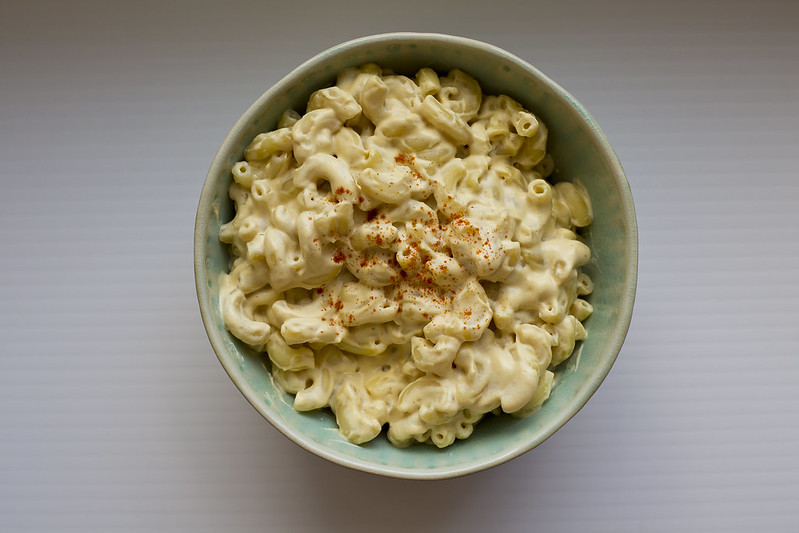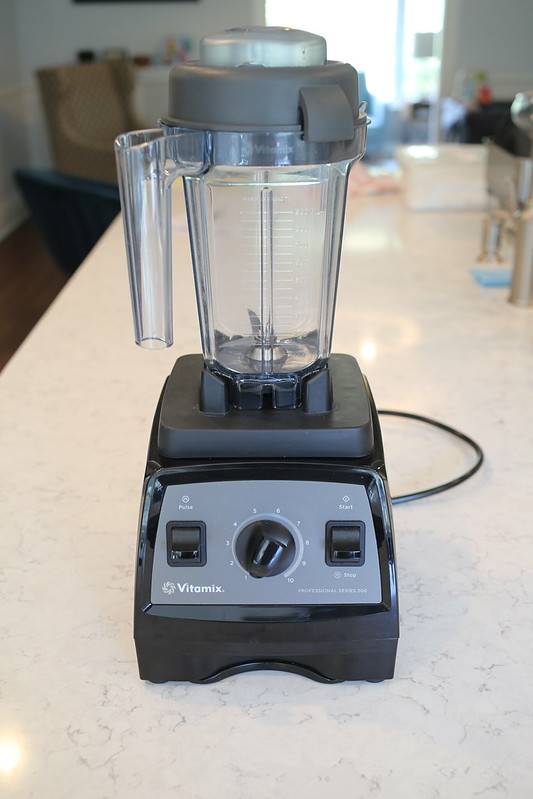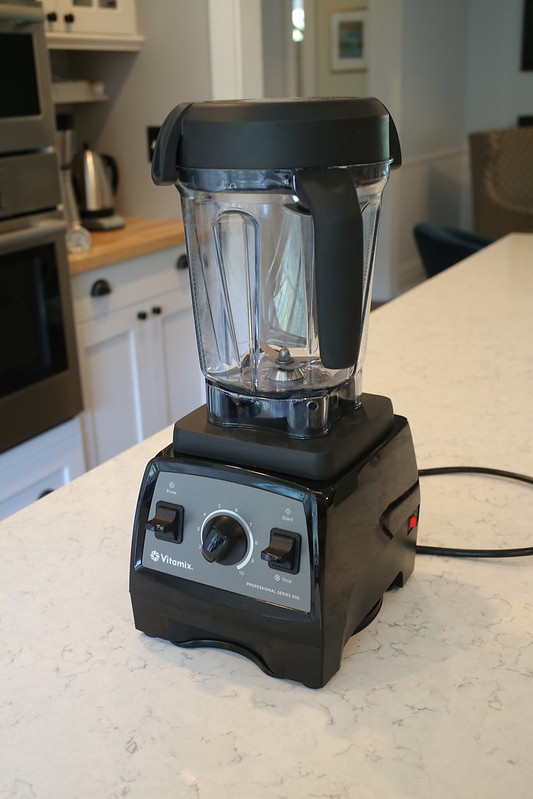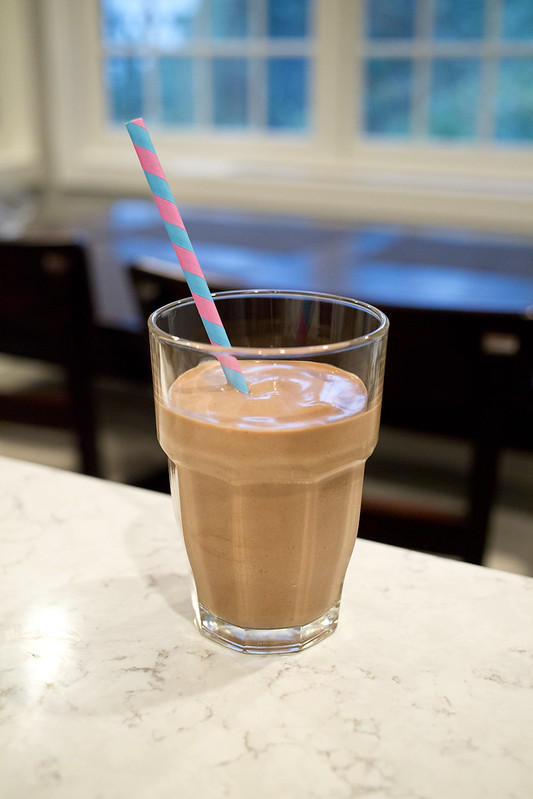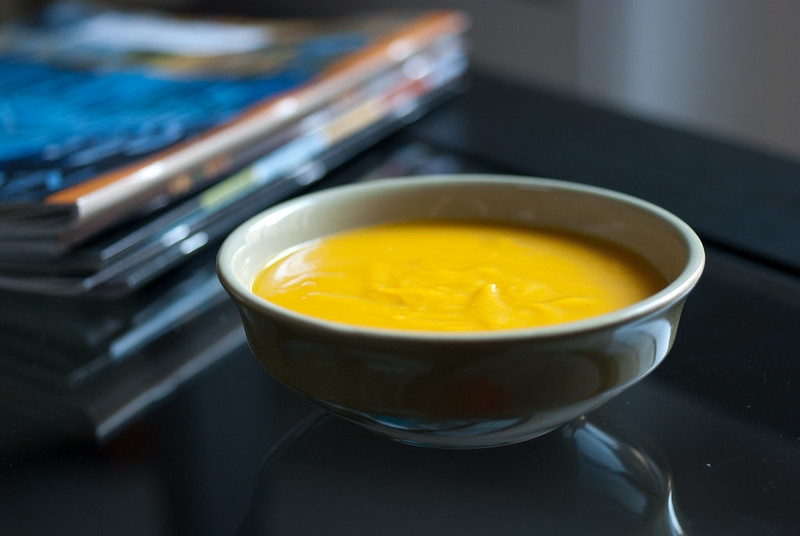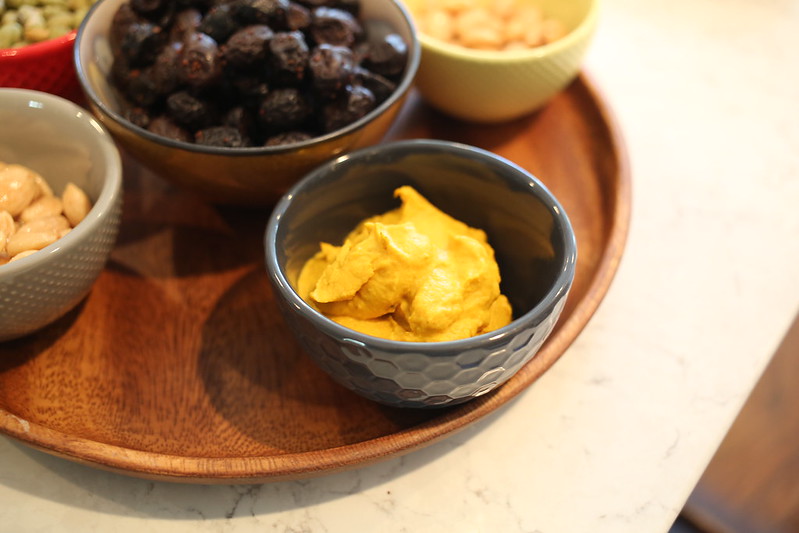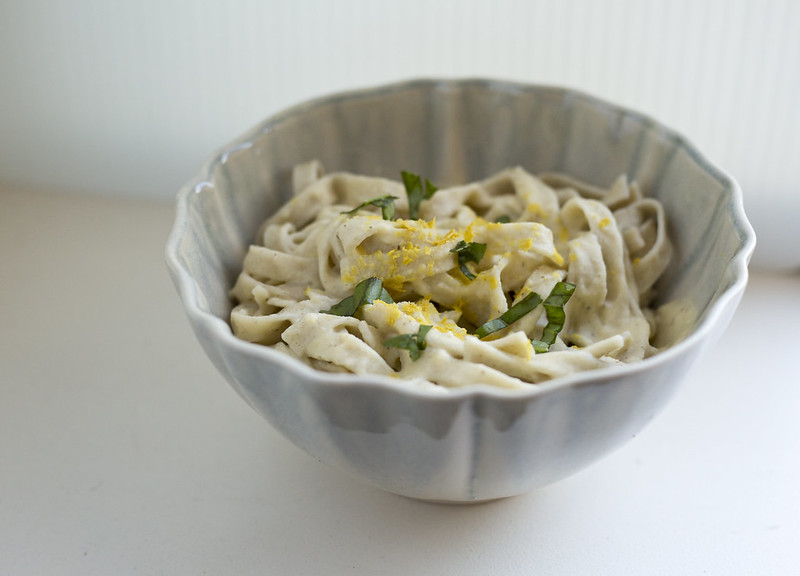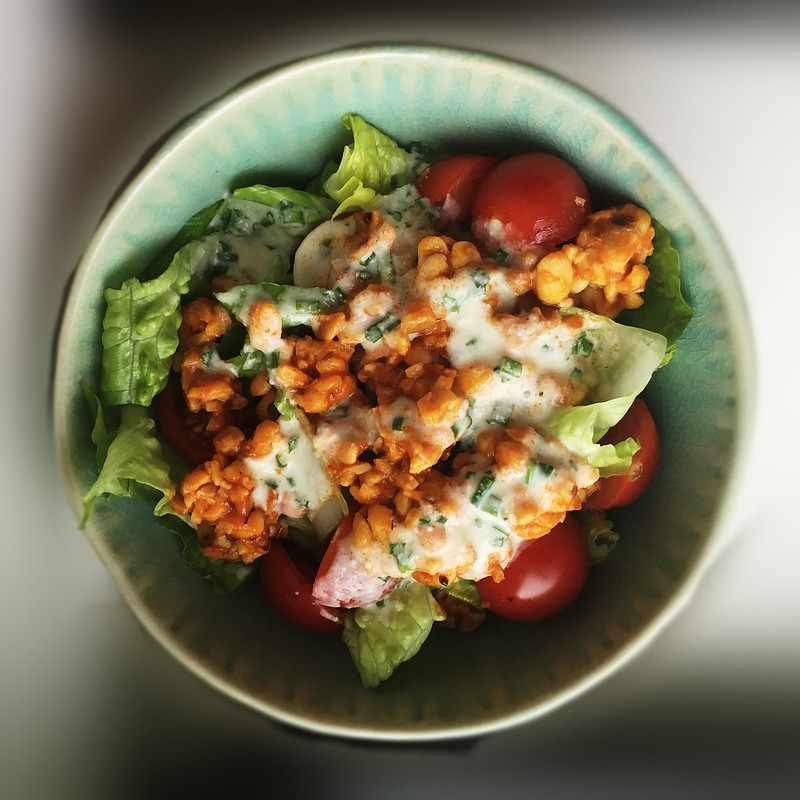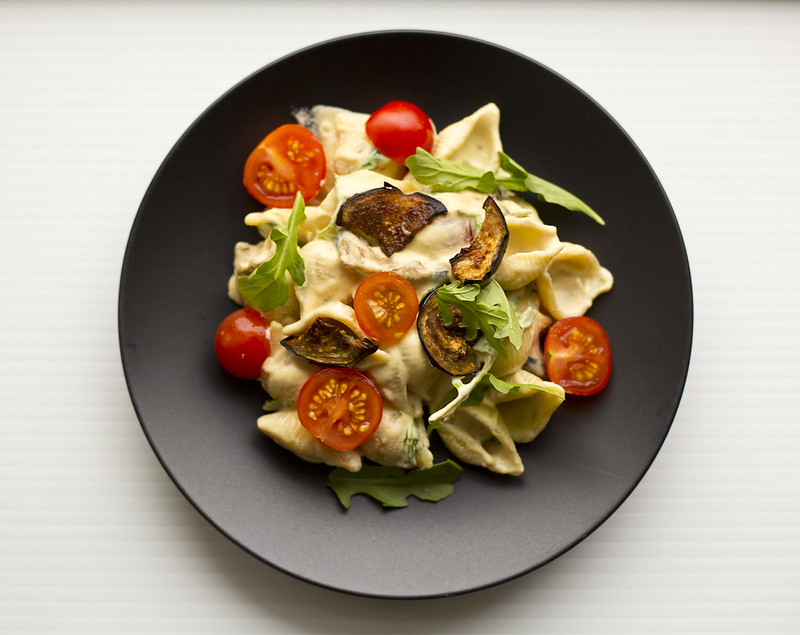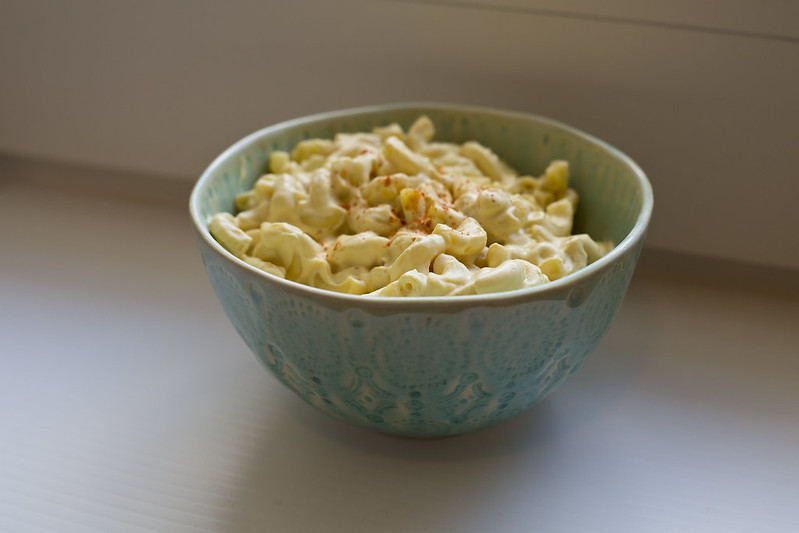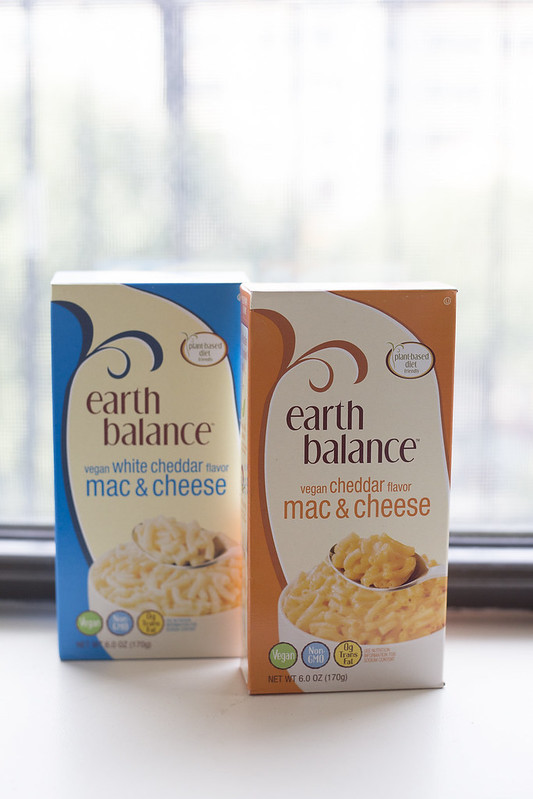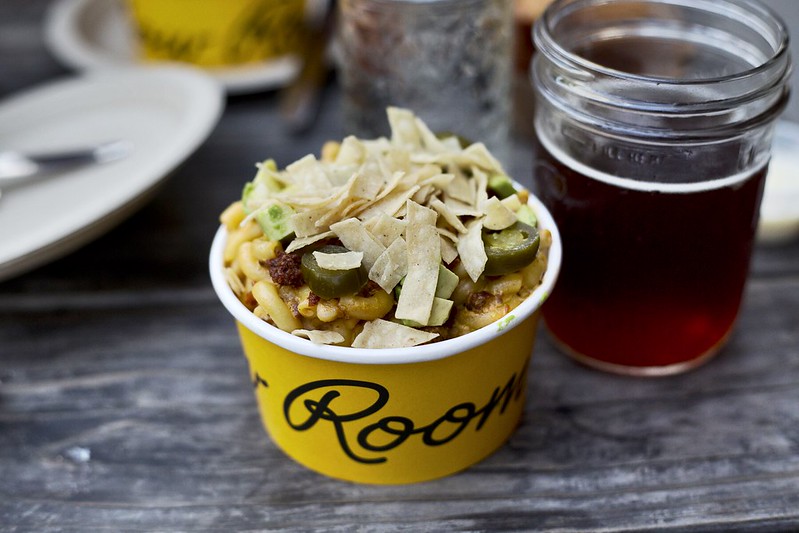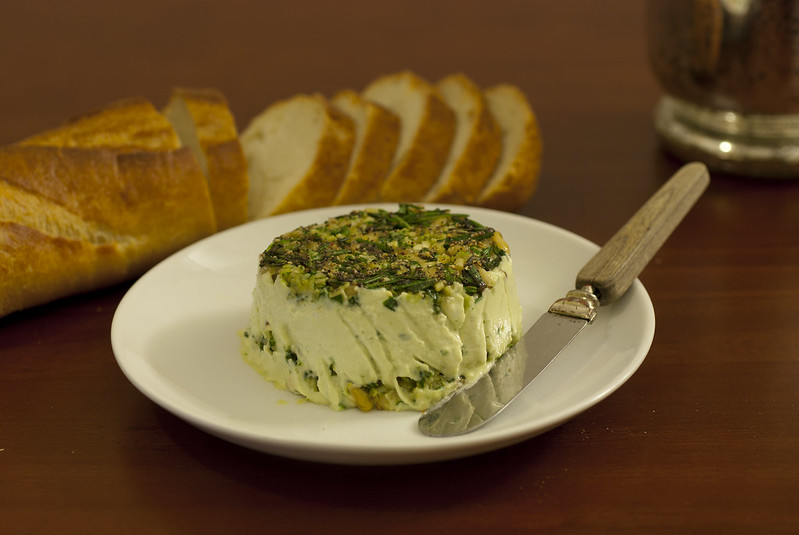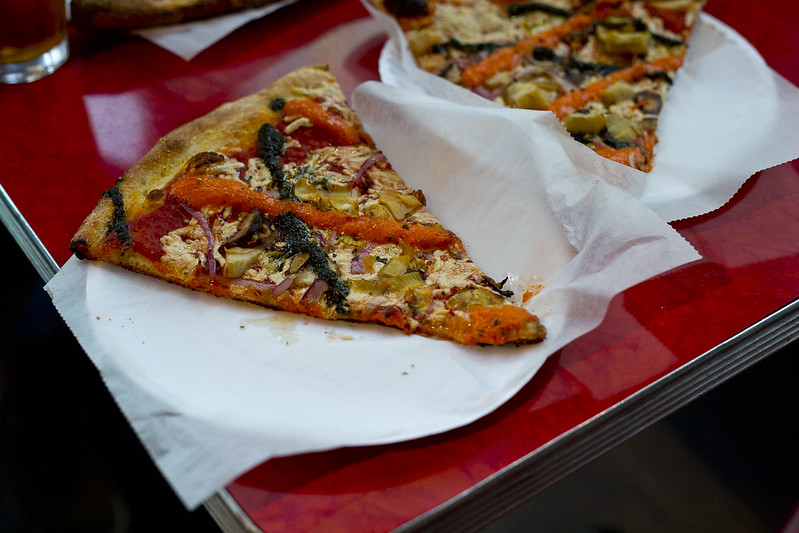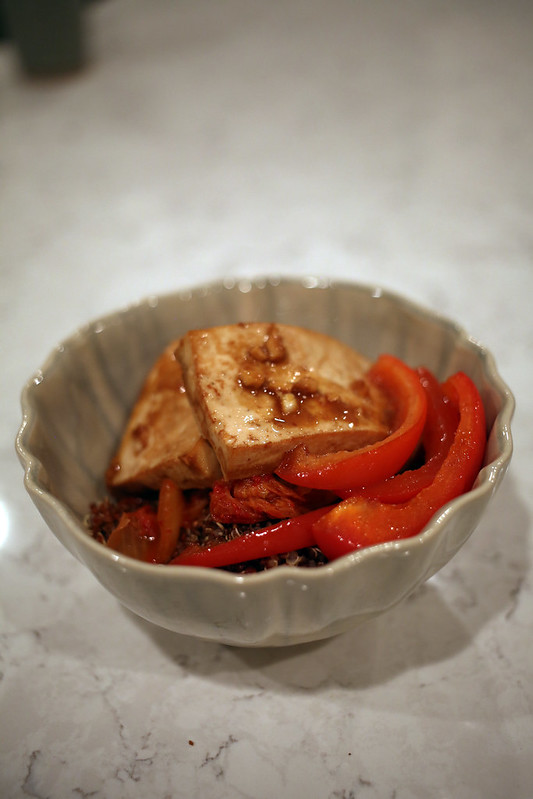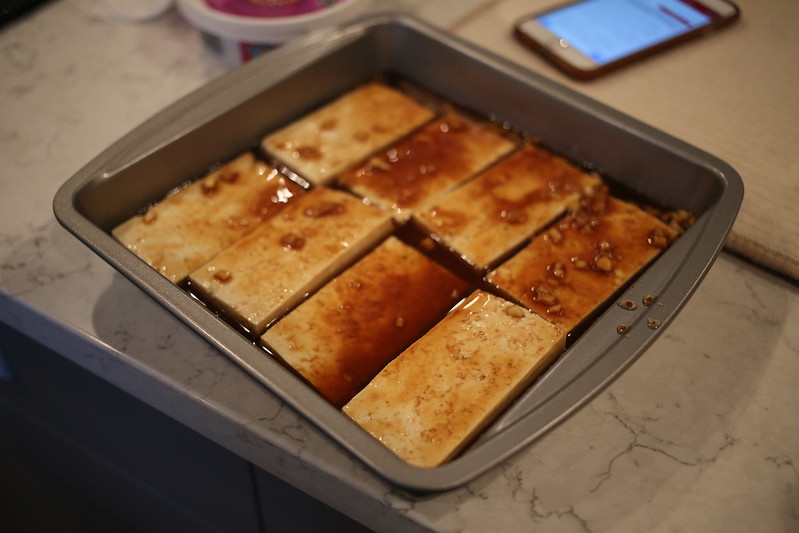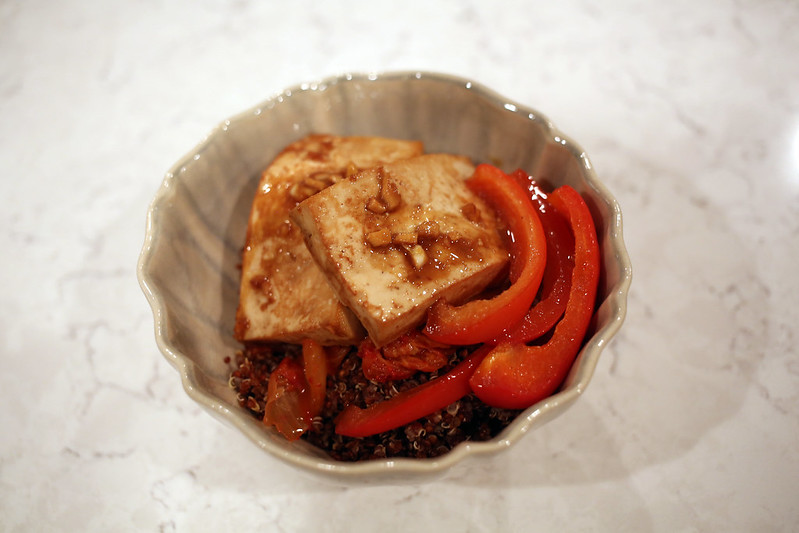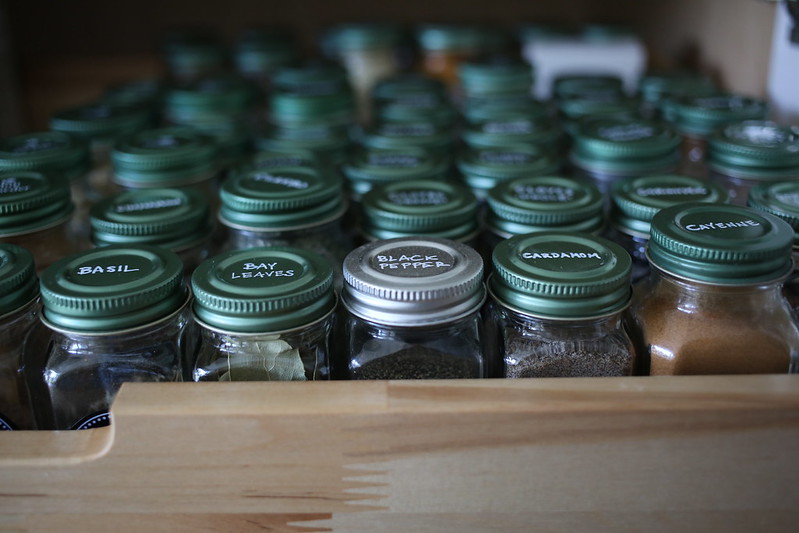

Let's talk spices!! I've already waxed poetic about some of my favorite spices (smoked paprika and sage, anyone?), so I won't get into the nitty gritty too much here. You can see my whole collection below (all 42 bottles!). When I first began regularly cooking for myself about ten years ago (and discovered all of Isa Chandra's amazing, but oftentimes complex recipes), the most expensive part of many meals was simply buying the spices required. Flash forward nearly a decade, and--because I cook with these ingredients so frequently--it's actually a more rare occasion in which I need to buy a spice in order to complete a recipe. This also makes it very easy to get creative when I'm whipping something up myself.
How do I keep track of all of these spices, you ask? I thought quite a bit about this when we moved and had a new kitchen to work with. I wanted a uniform system for keeping everything organized, and I wanted to be able to see--at a glance--where everything was. I hunted around on Amazon for a while. You can buy pre-printed spice labels which may be the way to go if writing by hand doesn't appeal to you. These can be adhered to the top and/or front of most spice bottles (just check your dimensions!). Regardless, you'll need to label a few of your more exotic spices yourself (many label companies provide a few blanks for this purpose). I love the hand-labeled look, and had a lot of fun labeling these myself! I just bought some 4oz glass spice jars with green lids from Amazon (they've got black, silver, and gold lids as well if those are more your style), similar in size to the Simply Organic bottles. I used a fine-tipped permanent white pen to write on the lids. Pretty simple. I love being able to look at these from above and know exactly where everything is and what I've got on hand. They're also alphabetized, for added convenience.
What about if you've taken off the lids? For that, I've labeled the fronts of the jars as well. I used these chalkboard stickers that are removable/repositionable but I stuck with the same permanent pen because I know I won't be changing out these bottles much.
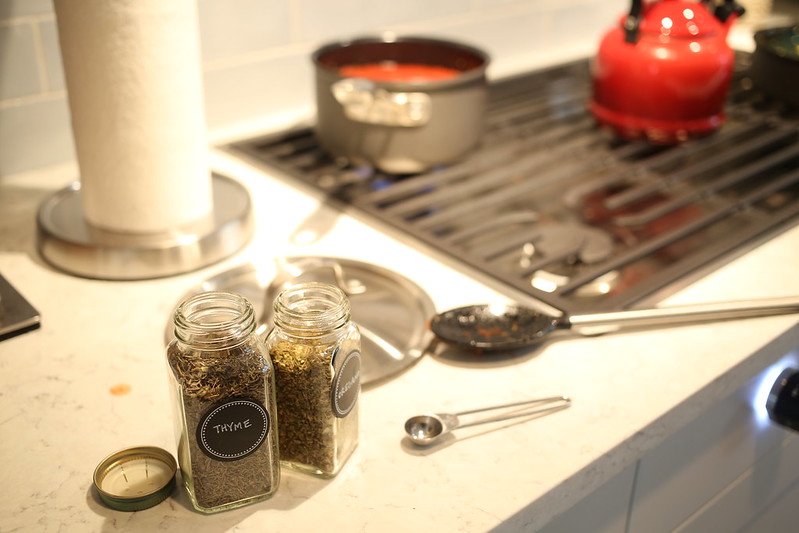
Works great!
Okay--looking at all these spices is so fun--let's do a quick run-down
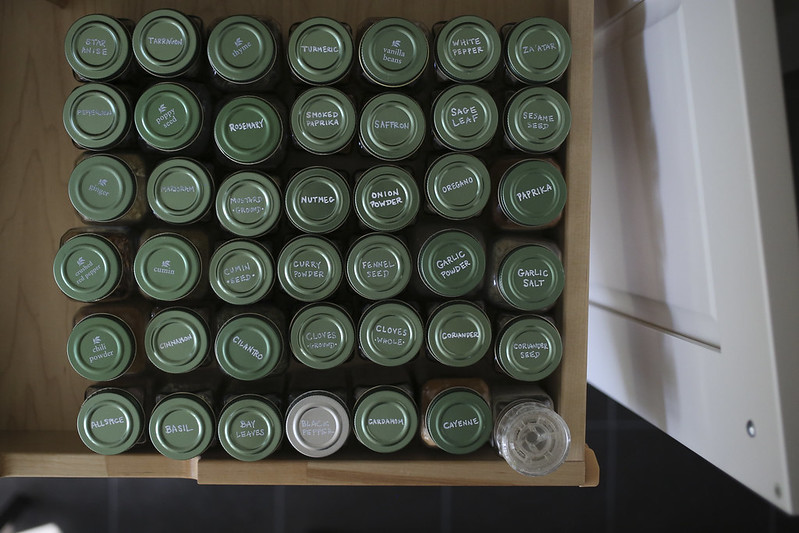
It's fall, so let's start with our autumnal baking spices: that'll be allspice, cardamom (also commonly used in Indian and Middle Eastern cuisine), cinnamon, cloves, nutmeg and ginger (which is also of course a regular in Asian cuisine--think marinades, stir fry, or as a sub for fresh ginger in a pinch). Then we have our frequently used (in my kitchen!), herbs and spices--basil, cilantro, crushed red pepper, oregano and let's throw sage, rosemary, and thyme in there, too. Marjoram is slightly more subtle than oregano. Tarragon is common in French cuisine and has an aromatic quality (like a very subtle anise). Garlic powder and onion powder are pretty straightforward, and my garlic salt is garlic powder, salt, and some basil and oregano. Bay leaves are great for soups and stocks (though fresh leaves are all the better, if you can manage). Black pepper is pretty straightforward; white pepper is actually just black pepper with the outer layer removed. Its commonly called for in Chinese cuisine--it's hotter, but the actual flavor complexity is a little more subtle than black pepper.
You're likely familiar with cayenne, chili powder and paprika. Cayenne tends to be pure ground peppers--it's the spiciest of the three, whereas chili powder sold in the US is often a mix of peppers and other ingredients (such as cumin, oregano, and garlic powder). And paprika is made from a very mild pepper, though there are many different varieties available. Coriander (in the US at least) generally refers to ground cilantro seeds--this ones a little hard to describe but it's a little citrusy--it is common in Indian cooking (great addition to samosas and curries). And it also pairs well with cumin in Mexican cuisine. I like adding cumin and coriander to my fried beans for tacos! Cumin is a bit nutty (literally), and actually originally comes from Asia. Its made its way around the globe, and is also found in Indian and Middle Eastern cooking. Turmeric is also common in Indian cuisine (curries, samosas, rice), and is supposed to have many great health benefits. It's a great addition to tofu scramble because it adds a nice flavor but also a beautiful yellow coloration. Saffron also imparts a yellow color and an incredible, subtle aroma (this spice is so complex it warrants a much larger discussion--I'll direct you here to read even more about it).
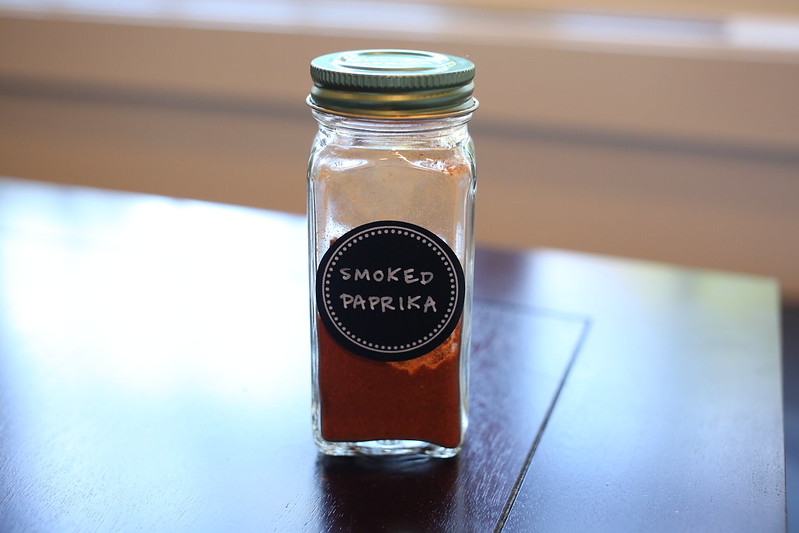
Fennel seed has a sweet, subtle flavor (similar to anise), and is often used in spice blends (so good for homemade vegan sausage!). Star anise is different from anise, but similar in flavor, and is commonly used in Chinese and Indian cuisine. If you're cooking with the whole seed pods they impart a lot of flavor, but are hard and not edible (should be removed from your sauce before serving).
I also love using za'atar--a delicious Middle Eastern spice blend. I highly recommend the shaved brussel sprouts with za'atar in the Crossroads cookbook. If you're looking for something simple, za'atar is great in a little olive oil with pita and hummus as well. And sesame seeds and poppy seeds are always good to have on hand. They're great for baking (nice for topping bread, or of course poppy seed muffins), and I also love putting toasted sesame seeds on top of my stir fry for a little extra flavor.

I think that covers just about everything! Most importantly, don't be intimidated by your spices. Once you've used something in a recipe a few times, you'll likely have a feel for how it may add to a dish. But you can also always open up that jar, give it a smell, and even a taste! Throwing in a dash of this and that here and there can be a lot of fun--and lead to some exciting and tasty new dishes.



